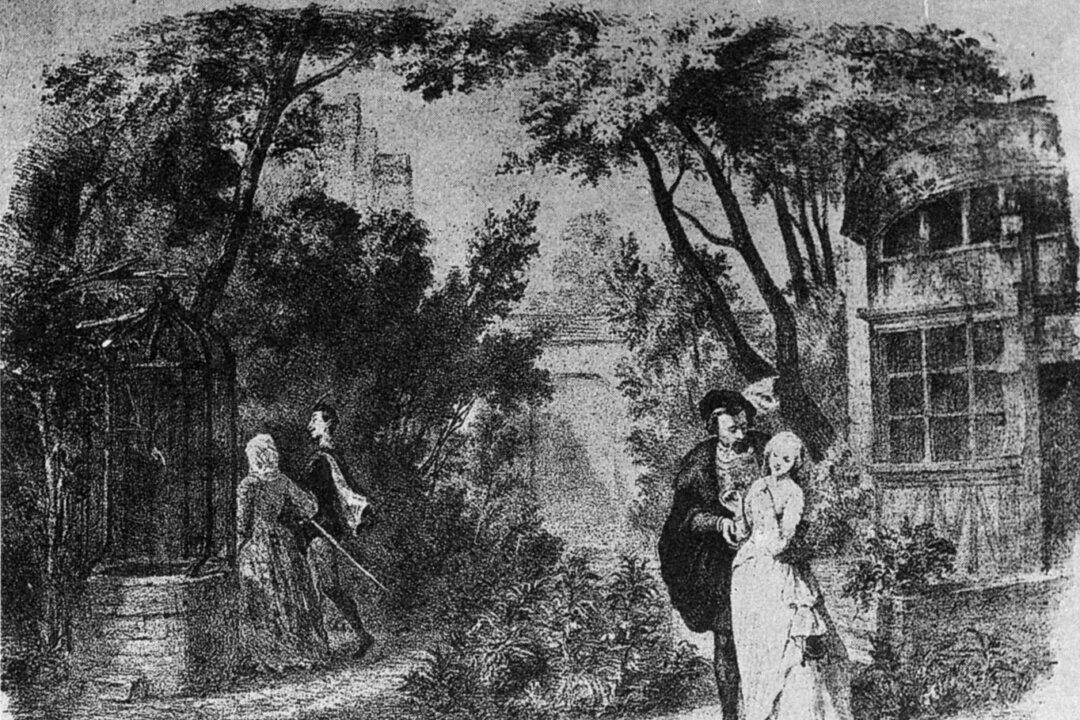“A Faust story” describes a certain type of tale: A man sells his soul to the devil in exchange for youthful beauty, the satisfaction of lustful desires, or earthly happiness.
Johann Wolfgang von Goethe (1749–1832) was inspired by centuries-old German legends to write his tragic play in two parts. “Faust,” which is occasionally called an epic poem because of its rhyming verses. It has inspired numerous musical adaptations, including several operas. Perhaps the most famous is the 1859 French opera, “Faust,” by Charles Gounod (1818–1893).

The libretto (lyrics to an opera) was written by Jules Barbier and Michel Carré, and based primarily on Carré’s play, “Faust et Marguerite.” Gounod’s “Faust” typifies the grand French opera, performed with all the splendor of the Paris Opera. It is five acts with a big chorus, dramatic special effects, and extensive ballet sequences. The opera played an important role in Gaston Leroux’s 1910 novel “The Phantom of the Opera.” Its dramatic plot, elaborate production, and enduring popularity made it the perfect backdrop for the backstage drama involving a young soprano, a reigning diva, and an opera ghost.
Deal With the Devil
Gounod’s opera begins with Faust, an old professor, in his dark study. Surrounded by his books, he realizes that he has dedicated his whole life to intellectual pursuits but has missed the pleasures of earthly life. He contemplates taking poison, but instead summons the devil Mephistopheles.The fiend offers the aged hermit youthful beauty and carnal pleasures in exchange for his soul. When he shows Faust a vision of the beautiful young Marguerite at her spinning wheel, the latter accepts the pact. Faust becomes a handsome young nobleman, and he and Mephistopheles set out for the lady.

A simple village maiden, Marguerite has a brother, Valentin, who is soon to leave for his military service. The villagers flee in fear when the devil, disguised as Faust, demonstrates his black magic. He approaches Marguerite, but she shyly rebukes him. However, to tempt her, Mephistopheles leaves a box of jewels on her doorstep.

Faust’s Immorality
This opera dramatizes what can happen when a person abandons their moral principles. Before Mephistopheles even appears, Faust is being tempted by satanic urges. He contemplates suicide, doubts the usefulness of theological pursuits, and denounces God when he hears the pious singing of his neighbors. After cursing happiness, science, prayer, faith, and patience, he declares, “Come to me, Satan!” (“A moi, Satan! à moi!”)Goethe’s “Faust” begins with a battle between God and Satan over Faust’s soul, since the aged doctor is one of God’s favorites. As in the biblical story of Job, God allows Satan to tempt the righteous man. Faust has mastered philosophy, law, medicine, and theology, and then turns to magic to increase his knowledge. The opera doesn’t specifically mention black magic, yet the opera opens with Faust saying “Nothing!” (“Rien!”), as his studies prove meaningless.
Gounod’s story opens in the dark study, not heaven, and removes any religious sensitivity from Faust’s opening soliloquy. Mephistopheles is a menacingly evil character throughout the opera. He possesses an malicious wit, lacks civility, and mocks amiability.

Repentance and Forgiveness
The lessons in “Faust” are of almost biblical proportions. The Devil himself is one of the main characters as Mephistopheles, and Marguerite, not Faust, is presented as his victim. Marguerite doesn’t ask for the attentions she receives from Mephistopheles or Faust, but Faust deliberately calls on Satan. Marguerite begins the story as a pious Christian, but she is tempted to sin by Faust, aided by Mephistopheles. Although she commits several serious sins, she doesn’t lose her relationship with God. Like many people in the Bible, she is forgiven because she repents.Although French grand operas presented a dramatic show, it wasn’t mindless or frivolous entertainment. As “Faust” illustrates, classical operas have strong moral tales. Based on popular folk legends, poems, and plays, they present powerful stories of right and wrong, brought to life through beautiful music. It’s just as stirring today as it was in 1859.









